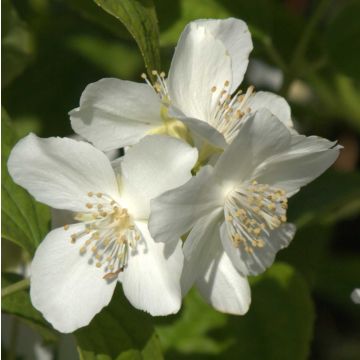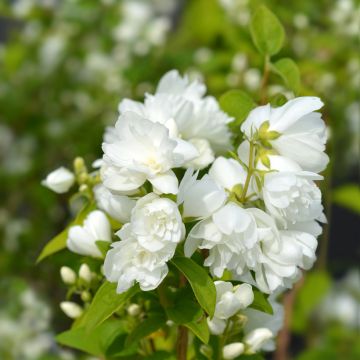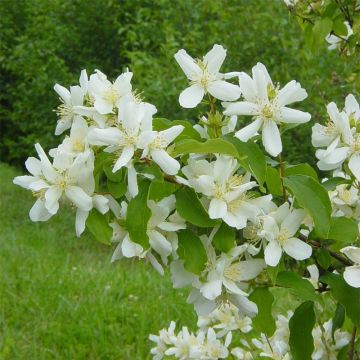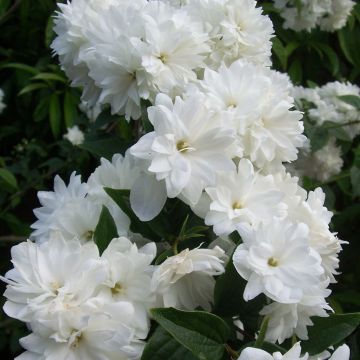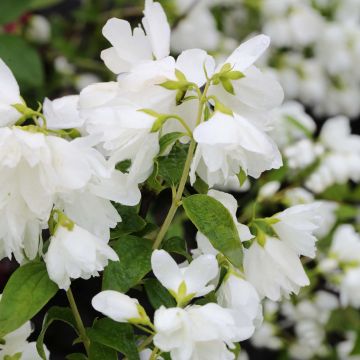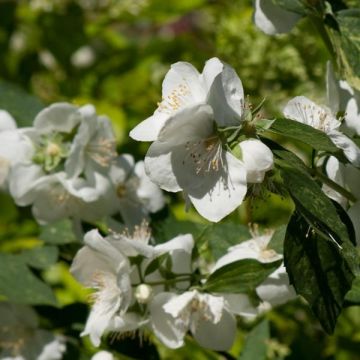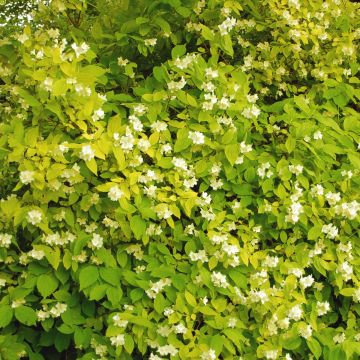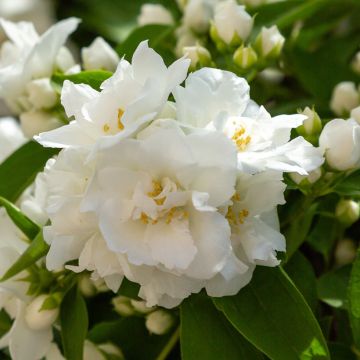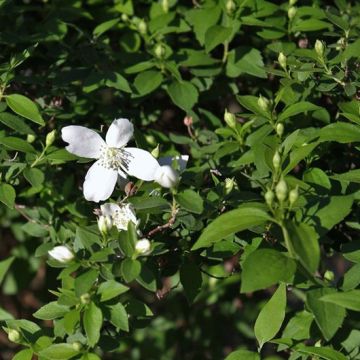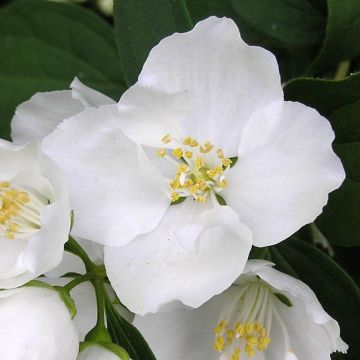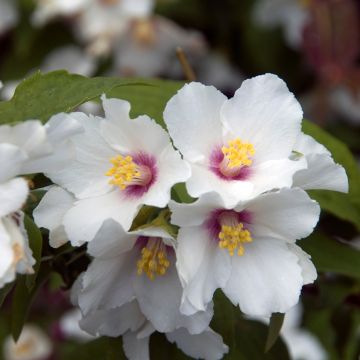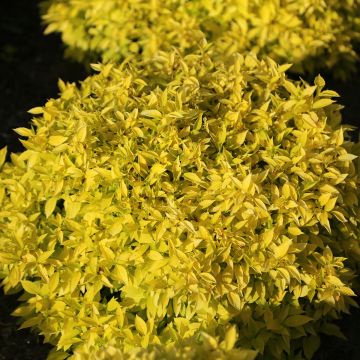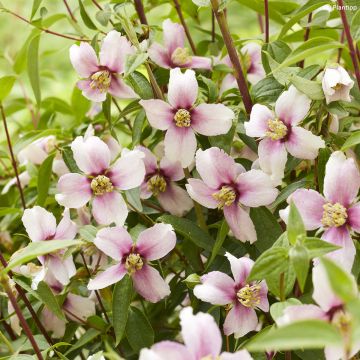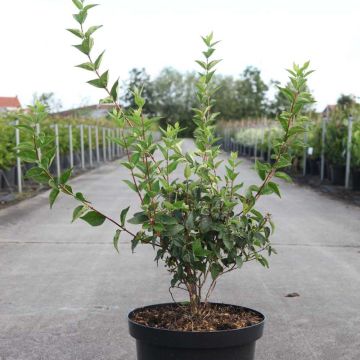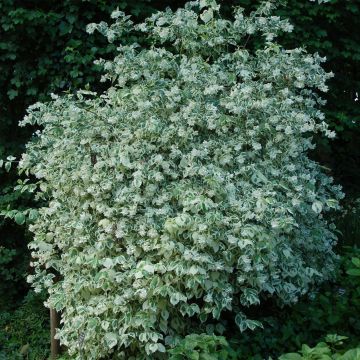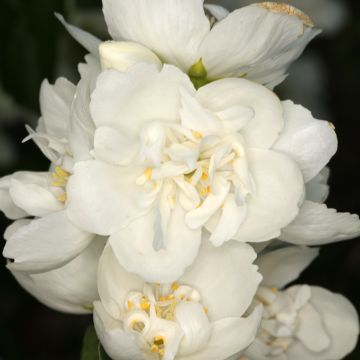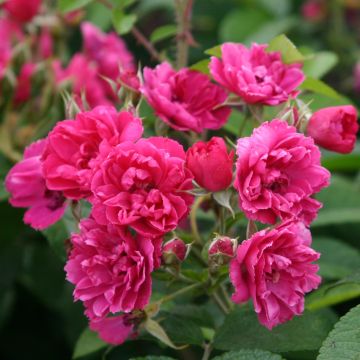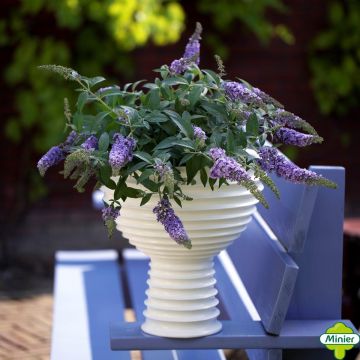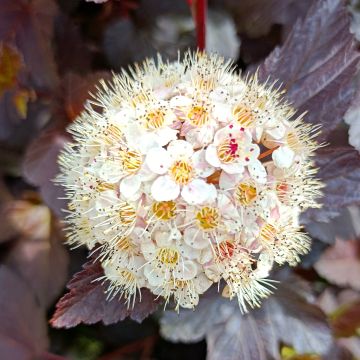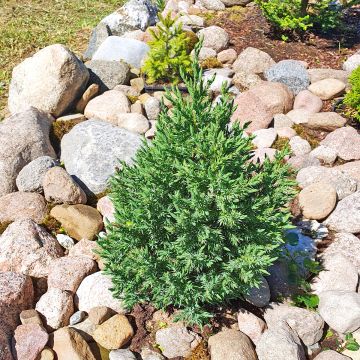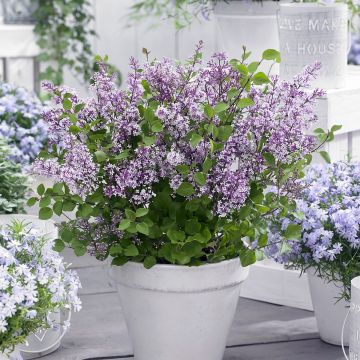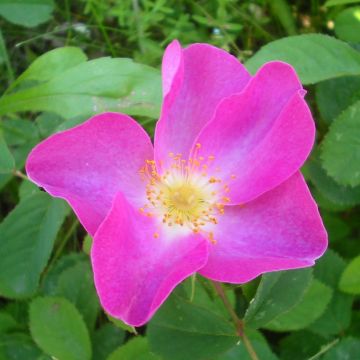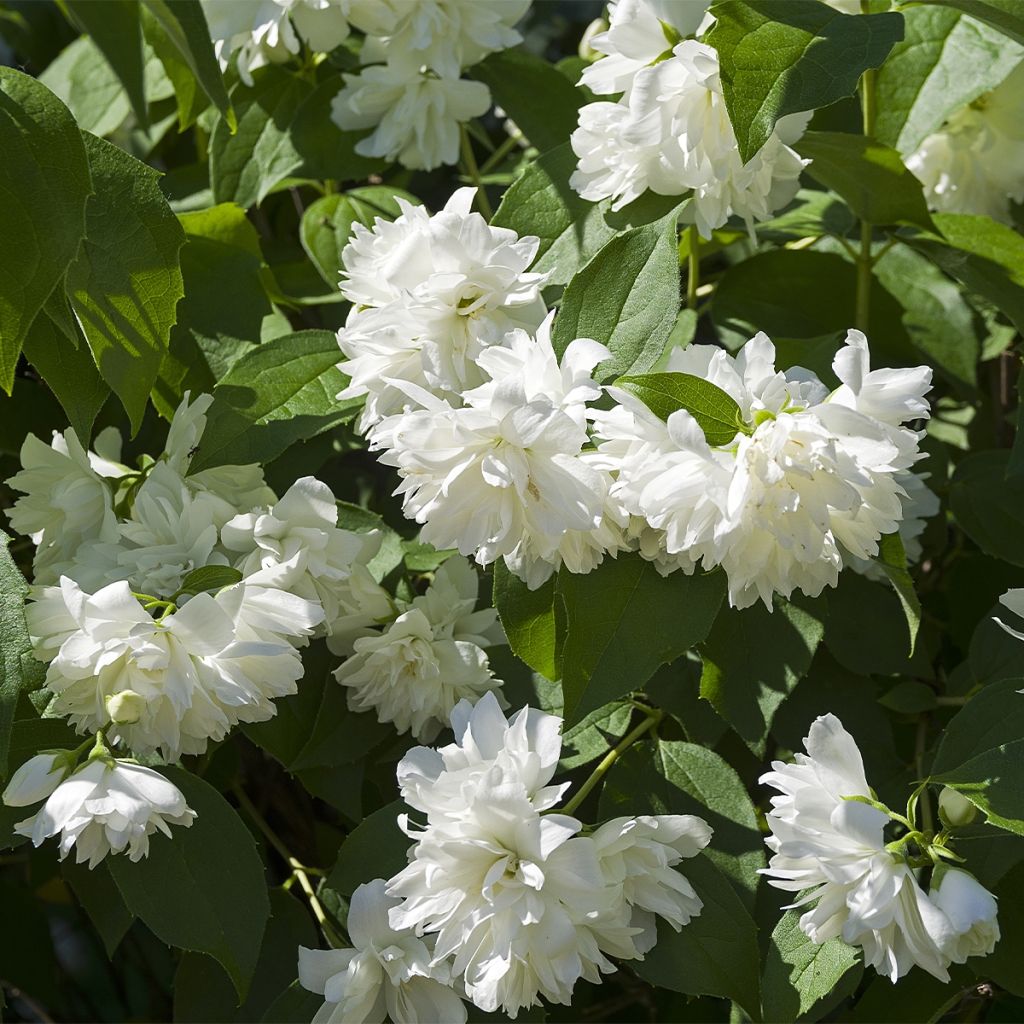

Philadelphus (x) virginalis Minnesota Snowflake
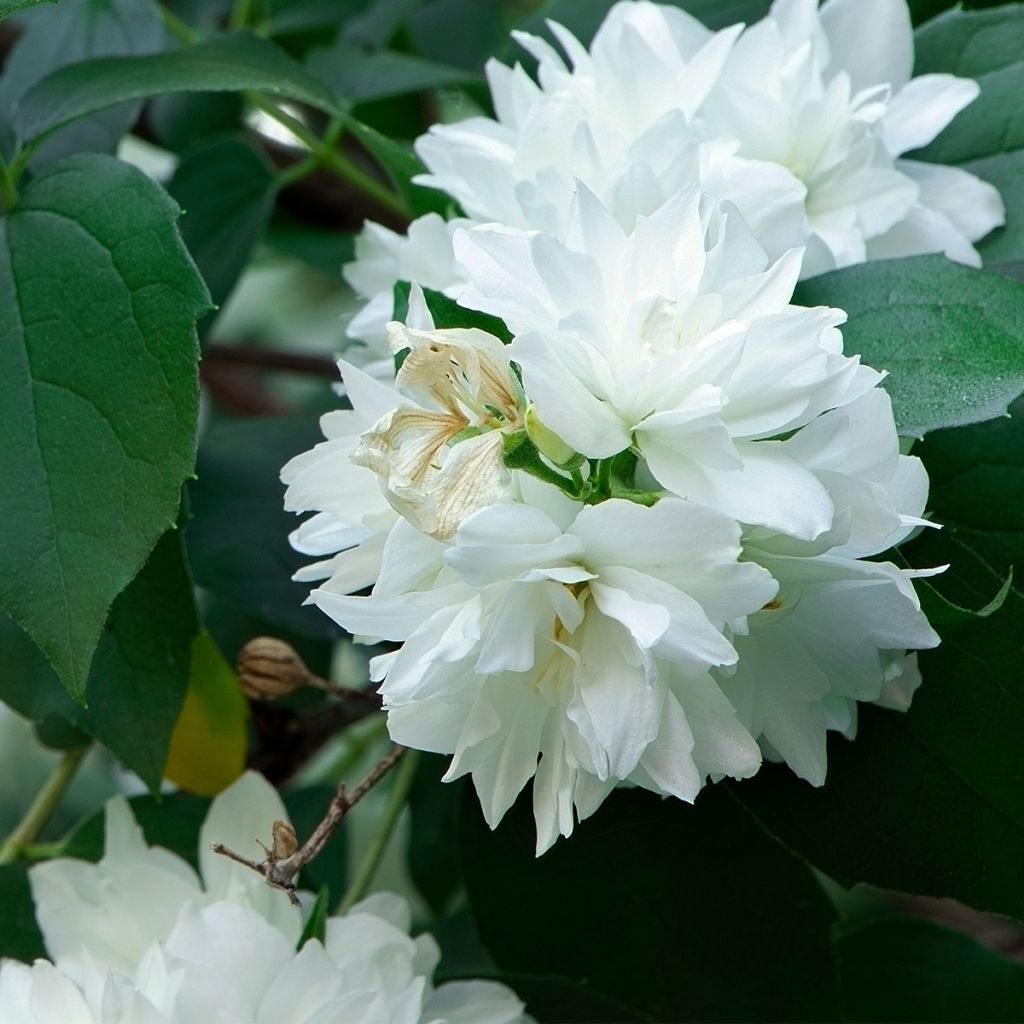

Philadelphus (x) virginalis Minnesota Snowflake
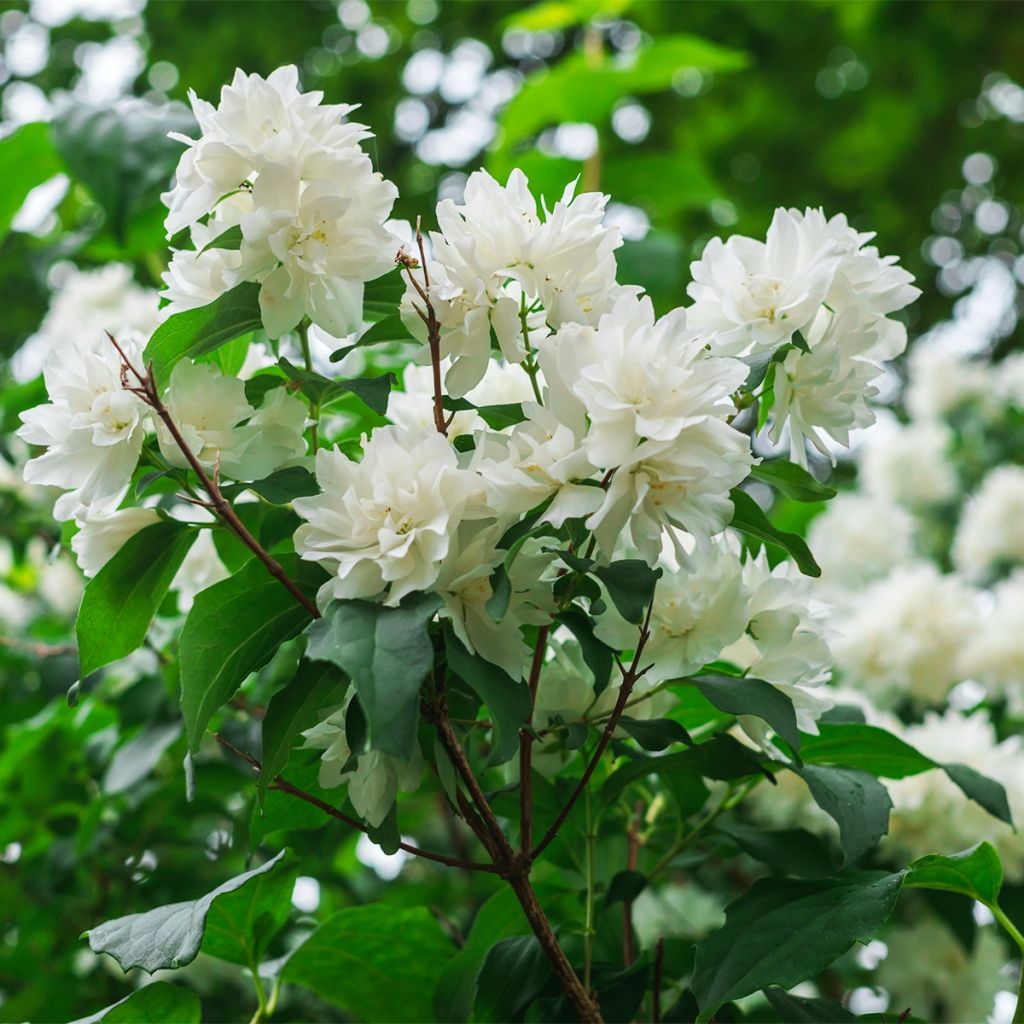

Philadelphus (x) virginalis Minnesota Snowflake
Philadelphus (x) virginalis Minnesota Snowflake
Philadelphus x virginalis Minnesota Snowflake
Mock-orange, English dogwood
Why not try an alternative variety in stock?
View all →This plant carries a 24 months recovery warranty
More information
We guarantee the quality of our plants for a full growing cycle, and will replace at our expense any plant that fails to recover under normal climatic and planting conditions.
Oversize package: home delivery by special carrier from €6.90 per order..
Express home delivery from €8.90.
From €5.90 for pickup delivery and €6.90 for home delivery
Express home delivery from €8.90.
Does this plant fit my garden?
Set up your Plantfit profile →
Description
The Philadelphus x virginalis Minnesota Snowflake is a vigorous, floriferous, and fragrant hybrid mock orange bush that will be wonderful in a loose hedge. This large deciduous bush produces an abundance of white, double flowers in late spring that perfume a whole area of the garden. Its well-branched vegetation will perfectly fulfill its role as a screen in spring and summer. Rediscover mock oranges, they are simple but very robust bushes that have no specific requirements. They find their place in every garden, from lowland to mountain, from north to south of our country!
The genus Philadelphus belongs to the hydrangea family. The variety 'Minnesota Snowflake' is a horticultural hybrid obtained in the USA by Guy Bush around 1935 from a sowing of Philadelphus virginalis. It is a bush of beautiful stature and fairly rapid growth, with strong and well-branched vegetation. At maturity, around 10 years old, it reaches a height of 3m (9 ft 10 in) and a spread of 2.50m (8 ft 2 in), depending on the growing conditions. It flowers in May-June, for about 3 weeks, with a very beautiful floral fragrance. Each double flower, 4 cm (1.6 in) wide, is composed of numerous white-cream petals, but devoid of stamens. They are gathered in small clusters of 3 to 6 on one-year-old slightly drooping branches, forming a somewhat disordered but charming mass. The deciduous foliage appears in spring, its colour is a fairly light and bright green. The leaves are entire, oval-shaped with pointed tips, slightly dentate along the edges. They measure about 5 cm (2 in) long and turn yellow in autumn before falling.
Philadelphus, sometimes called mock orange, are robust and perfectly hardy bushes that thrive in all types of soil. They resist everything, even summer droughts, but they prefer a certain freshness at their base. The 'Minnesota Snowflake' mock orange is well suited for the composition of large shrub beds or flowering hedges, whether pruned or not. For example, associate it with lilacs, apple trees, and flowering cherry trees, buddleias, and other smoke bushes, for example.
Report an error about the product description
Philadelphus (x) virginalis Minnesota Snowflake in pictures
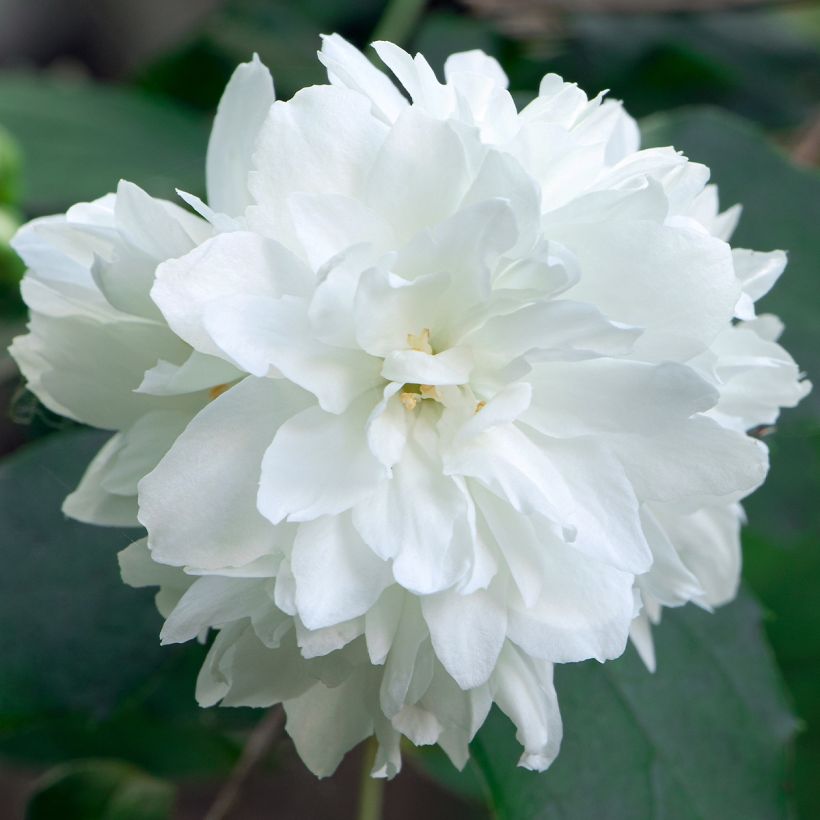

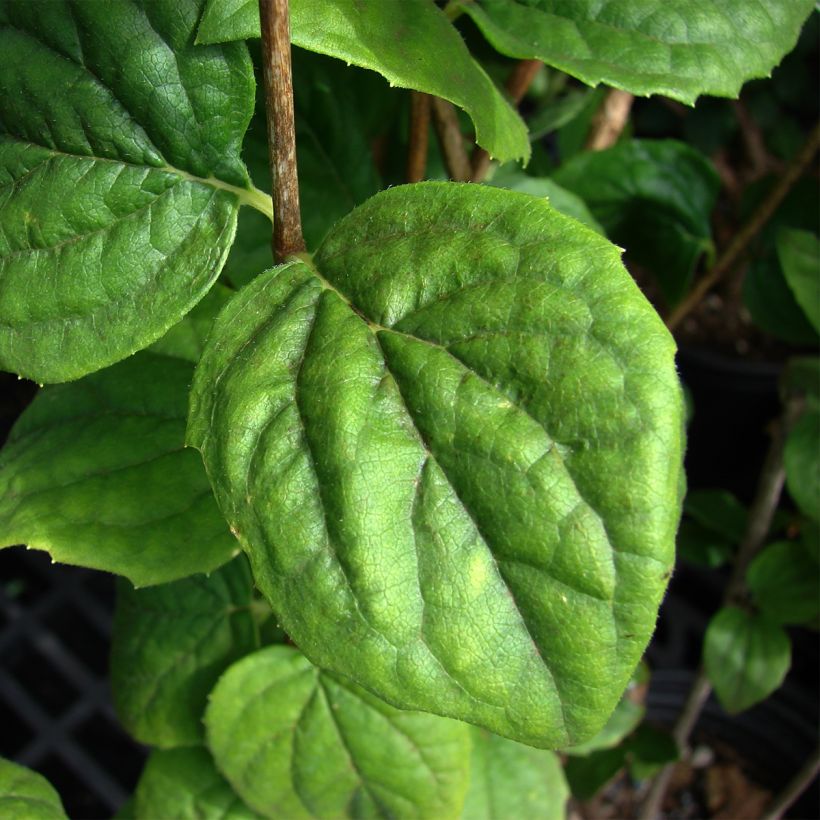

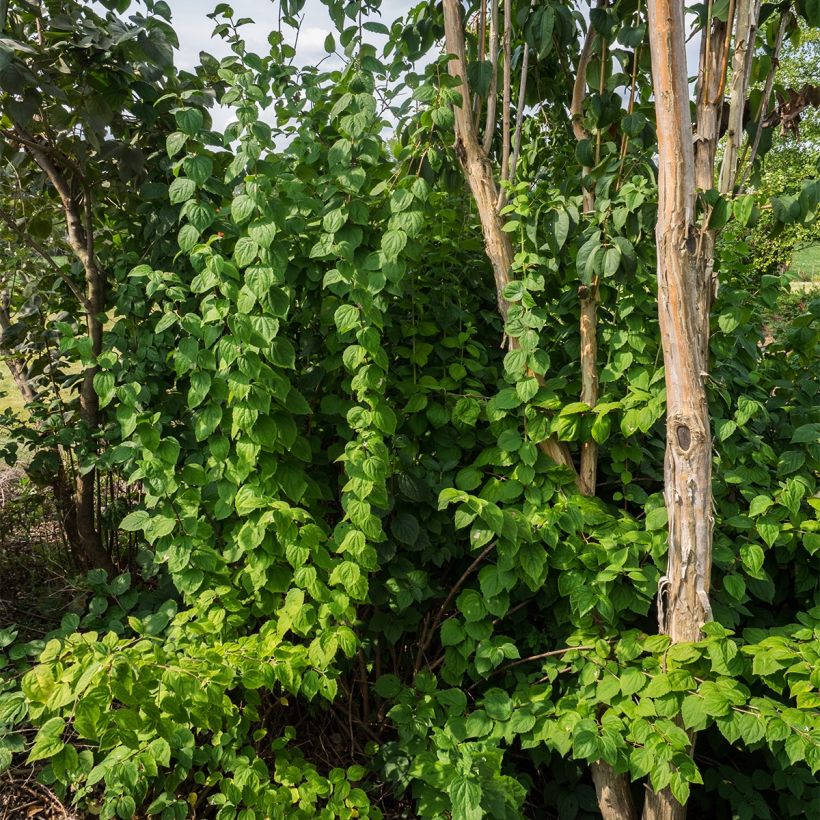

Plant habit
Flowering
Foliage
Botanical data
Philadelphus
x virginalis
Minnesota Snowflake
Hydrangeaceae
Mock-orange, English dogwood
Cultivar or hybrid
Other Philadelphus - Mock Orange
Planting and care
The Philadelphus Minnesota Snowflake, very easy to grow, requiring very little maintenance and very accommodating, is well suited to all gardens and ideal for beginner gardeners. An ordinary, poor soil, even limestone, not too dry to fresh, suits it. However, it will prefer a fresh, well-drained and humus-rich soil. Very hardy, it can withstand negative temperatures down to -20°C (-4 °F). Planting should be done in early spring or autumn, preferably in full sun or partial shade. Excessive hot exposures should be avoided in dry and hot climates. Flowering on the previous year's shoots, Philadelphus should be pruned after flowering, in July-August, by shortening the branches that have bloomed by a third of their length. A more severe pruning can be done every 2 to 3 years, in order to keep it compact and very floriferous. Simply do not hesitate to cut the old wood and branches that are too long down to the base of the plant to encourage it to branch out from the base. A resilient shrub, it can however be susceptible to powdery mildew and black aphids.
Planting period
Intended location
Care
-
, onOrder confirmed
Reply from on Promesse de fleurs
Foolproof Shrubs
Haven't found what you were looking for?
Hardiness is the lowest winter temperature a plant can endure without suffering serious damage or even dying. However, hardiness is affected by location (a sheltered area, such as a patio), protection (winter cover) and soil type (hardiness is improved by well-drained soil).

Photo Sharing Terms & Conditions
In order to encourage gardeners to interact and share their experiences, Promesse de fleurs offers various media enabling content to be uploaded onto its Site - in particular via the ‘Photo sharing’ module.
The User agrees to refrain from:
- Posting any content that is illegal, prejudicial, insulting, racist, inciteful to hatred, revisionist, contrary to public decency, that infringes on privacy or on the privacy rights of third parties, in particular the publicity rights of persons and goods, intellectual property rights, or the right to privacy.
- Submitting content on behalf of a third party;
- Impersonate the identity of a third party and/or publish any personal information about a third party;
In general, the User undertakes to refrain from any unethical behaviour.
All Content (in particular text, comments, files, images, photos, videos, creative works, etc.), which may be subject to property or intellectual property rights, image or other private rights, shall remain the property of the User, subject to the limited rights granted by the terms of the licence granted by Promesse de fleurs as stated below. Users are at liberty to publish or not to publish such Content on the Site, notably via the ‘Photo Sharing’ facility, and accept that this Content shall be made public and freely accessible, notably on the Internet.
Users further acknowledge, undertake to have ,and guarantee that they hold all necessary rights and permissions to publish such material on the Site, in particular with regard to the legislation in force pertaining to any privacy, property, intellectual property, image, or contractual rights, or rights of any other nature. By publishing such Content on the Site, Users acknowledge accepting full liability as publishers of the Content within the meaning of the law, and grant Promesse de fleurs, free of charge, an inclusive, worldwide licence for the said Content for the entire duration of its publication, including all reproduction, representation, up/downloading, displaying, performing, transmission, and storage rights.
Users also grant permission for their name to be linked to the Content and accept that this link may not always be made available.
By engaging in posting material, Users consent to their Content becoming automatically accessible on the Internet, in particular on other sites and/or blogs and/or web pages of the Promesse de fleurs site, including in particular social pages and the Promesse de fleurs catalogue.
Users may secure the removal of entrusted content free of charge by issuing a simple request via our contact form.
The flowering period indicated on our website applies to countries and regions located in USDA zone 8 (France, the United Kingdom, Ireland, the Netherlands, etc.)
It will vary according to where you live:
- In zones 9 to 10 (Italy, Spain, Greece, etc.), flowering will occur about 2 to 4 weeks earlier.
- In zones 6 to 7 (Germany, Poland, Slovenia, and lower mountainous regions), flowering will be delayed by 2 to 3 weeks.
- In zone 5 (Central Europe, Scandinavia), blooming will be delayed by 3 to 5 weeks.
In temperate climates, pruning of spring-flowering shrubs (forsythia, spireas, etc.) should be done just after flowering.
Pruning of summer-flowering shrubs (Indian Lilac, Perovskia, etc.) can be done in winter or spring.
In cold regions as well as with frost-sensitive plants, avoid pruning too early when severe frosts may still occur.
The planting period indicated on our website applies to countries and regions located in USDA zone 8 (France, United Kingdom, Ireland, Netherlands).
It will vary according to where you live:
- In Mediterranean zones (Marseille, Madrid, Milan, etc.), autumn and winter are the best planting periods.
- In continental zones (Strasbourg, Munich, Vienna, etc.), delay planting by 2 to 3 weeks in spring and bring it forward by 2 to 4 weeks in autumn.
- In mountainous regions (the Alps, Pyrenees, Carpathians, etc.), it is best to plant in late spring (May-June) or late summer (August-September).
The harvesting period indicated on our website applies to countries and regions in USDA zone 8 (France, England, Ireland, the Netherlands).
In colder areas (Scandinavia, Poland, Austria...) fruit and vegetable harvests are likely to be delayed by 3-4 weeks.
In warmer areas (Italy, Spain, Greece, etc.), harvesting will probably take place earlier, depending on weather conditions.
The sowing periods indicated on our website apply to countries and regions within USDA Zone 8 (France, UK, Ireland, Netherlands).
In colder areas (Scandinavia, Poland, Austria...), delay any outdoor sowing by 3-4 weeks, or sow under glass.
In warmer climes (Italy, Spain, Greece, etc.), bring outdoor sowing forward by a few weeks.

































